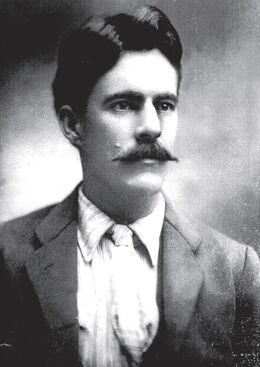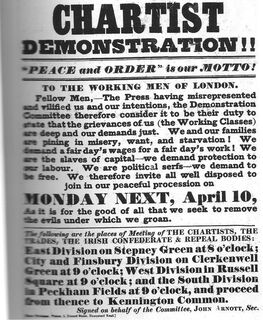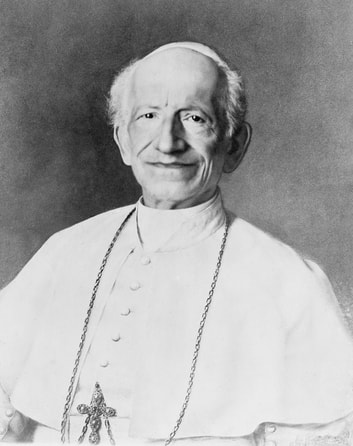 Harry C. Wheeler, the Sheriff of Cochise County who organized the Jerome Deportation. Wheeler's role in the illegal vigilante action was the subject of a United States Supreme Court decision which held that even though the deportees were transported across state lines, the Constitution did not provide the federal government with the authority to prosecute Wheeler and others involved in the deportation.
Harry C. Wheeler, the Sheriff of Cochise County who organized the Jerome Deportation. Wheeler's role in the illegal vigilante action was the subject of a United States Supreme Court decision which held that even though the deportees were transported across state lines, the Constitution did not provide the federal government with the authority to prosecute Wheeler and others involved in the deportation. In May 1917, IWW Local 800 presented a list of demands to Phelps Dodge. They asked for an end to physical examinations after shifts (used by the mine owners to counter theft), having two workers on each drilling machine, two men working the ore elevators, an end to blasting while men were in the mine, an end to the bonus system, no more assignment of construction work to miners, replacement of the sliding scale of wages with a $6.00 per day shift rate, and no discrimination against union members. The company refused all the demands.
IWW Local 800 called a strike to begin on June 26, 1917. When the strike occurred as scheduled, not only the miners at Phelps Dodge, but also those at other mines walked out. More than 3,000 miners—about 85 percent of all mine workers in Bisbee—went on strike. Although the strike was peaceful, local authorities immediately asked for federal troops to break the strike. Cochise County Sheriff Harry Wheeler set up his headquarters in Bisbee on the first day of the strike. On July 2, Wheeler asked Republican Governor Thomas Edward Campbell to request federal troops, suggesting the strike threatened US war interests and claiming, without any evidence that "[t]he whole thing appears to be pro-German and anti-American." Campbell quickly telegraphed the White House and made the request, but President Woodrow Wilson declined to send in the Army. He appointed former Arizona Governor George W. P. Hunt as a mediator; Hunt, however, took no affirmative steps to bring the two sides to the bargaining table.
On July 5, 1917, an IWW local in Jerome, Arizona, struck Phelps Dodge. Douglas ordered his mine superintendents to remove the miners from the town, in what became known as the Jerome Deportation. Mine supervisors, joined by 250 local businessmen and members of the IUMMSW, began rounding up suspected IWW members at dawn on July 10. More than 100 men were abducted by these vigilantes and held in the county jail (with the cooperation of the Yavapai County sheriff). Later that day, 67 men were deported by train to Needles, California, and ordered not to return. When the IWW protested to Governor Campbell, he declared that the IWW had "threatened" the governor.
The Jerome Deportation proved to be a test run for Phelps Dodge, which ordered the same plan, but larger in scale, in Bisbee. On July 11, 1917, Sheriff Wheeler met with Phelps Dodge corporate executives to plan the deportation of striking miners. Some 2,200 men from Bisbee and the nearby town of Douglas were recruited and deputized as a posse— one of the largest posses ever assembled. Phelps Dodge officials also met with executives of the El Paso and Southwestern Railroad, who agreed to provide rail transportation for any deportees.
At 7:30 a.m., the 2,000 arrested men were assembled in front of the Bisbee Post Office and marched two miles (3 km) to Warren Ballpark. Sheriff Wheeler oversaw the march from a car outfitted with a loaded Marlin 7.62 mm belt-fed machine gun. At the baseball field, the arrestees were told that if they denounced the IWW and went back to work, they would be freed. Only men who were not IWW members or organizers were given this choice. About 700 men agreed to these terms, while the rest sang, jeered or shouted profanities.
At 11:00 a.m., the El Paso and Southwestern Railroad brought 23 cattle cars to Bisbee. The posse deputies forced the remaining 1,286 arrestees at gunpoint to board the cars, many of which had more than three inches (76 mm) of manure on the floor. Although temperatures were in the mid-90s Fahrenheit,[(mid-30s Celsius), no water had been provided to the men since the arrests began at dawn.
The train stopped 10 miles (16 km) east of Douglas to take on water, some of which was provided to the deportees in the packed cars. Deputies manned two machine guns from nearby hilltops to guard the train, while another 200 armed men patrolled the tracks. The train continued to Columbus, New Mexico (about 175 miles (282 km) away), arriving at about 9:30 p.m. Initially prevented from unloading at Columbus, the train slowly traveled west another 20 miles (32 km) to Hermanas, not stopping until 3:00 a.m.
During the Bisbee Deportation, Phelps Dodge executives seized control of the telegraph and telephones to prevent news of the arrests and expulsion from being reported. Company executives refused to let Western Union send wires out of town, and stopped Associated Press reporters from filing stories. News of the Bisbee Deportation was made known only after an IWW attorney, who met the train in Hermanas, issued a press release.
With 1,300 penniless men in Hermanas, the Luna County sheriff worriedly wired the Governor of New Mexico for instructions. Republican Governor Washington Ellsworth Lindsey said the men should be treated humanely and fed; he urgently contacted President Wilson and asked for assistance. Wilson ordered U.S. Army troops to escort the men to Columbus, New Mexico. The deportees were housed in tents originally intended for use by Mexican refugees, who had fled across the border to the United States to escape the Mexican Army's Pancho Villa Expedition. The men were allowed to stay in the camp for two months until September 17, 1917.
From the day of the deportations until November 1917, the Citizens' Protective League ruled Bisbee. Based in a building owned by the copper companies, its representatives interrogated residents about their political beliefs with respect to unions and the war, determining who could work or obtain a draft deferment. Sheriff Wheeler established guards at all entrances to Bisbee and Douglas. Anyone seeking to exit or enter the town over the next several months had to have a "passport" issued by Wheeler. Any adult male in town who was not known to the sheriff's men was brought before a secret sheriff's kangaroo court. Hundreds of citizens were tried, and most of them were deported and threatened with lynching if they returned. Even long-time citizens of Bisbee were deported by this "court".
From the day of the deportations until November 1917, the Citizens' Protective League ruled Bisbee. Based in a building owned by the copper companies, its representatives interrogated residents about their political beliefs with respect to unions and the war, determining who could work or obtain a draft deferment. Sheriff Wheeler established guards at all entrances to Bisbee and Douglas. Anyone seeking to exit or enter the town over the next several months had to have a "passport" issued by Wheeler. Any adult male in town who was not known to the sheriff's men was brought before a secret sheriff's kangaroo court. Hundreds of citizens were tried, and most of them were deported and threatened with lynching if they returned. Even long-time citizens of Bisbee were deported by this "court".
When ordered to cease these activities by the Arizona Attorney General, Wheeler tried to explain his actions. Asked what law supported his actions, he answered: "I have no statute that I had in mind. Perhaps everything that I did wasn't legal....It became a question of 'Are you American, or are you not?" He told the Attorney General: "I would repeat the operation any time I find my own people endangered by a mob composed of eighty percent aliens and enemies of my Government."
These actions took place during a period in the early 20th century when attacks by anarchists and labor unrest and violence erupted in numerous American cities and industries. Many native-born Americans were worried about such actions, attributing the unrest to the high numbers of immigrants, rather than to the poor working conditions in many industries. As a result, national press reaction to the Bisbee Deportation was muted. Although many newspapers carried stories about the event, most of them editorialized that the workers "must have" been violent, and therefore "gotten what they deserved", thus criminalizing the victims. Some major papers said that Sheriff Wheeler had gone too far, but declared that he should have imprisoned the miners rather than deported them. The New York Times criticized the violence on the part of the mine owners and suggested that mass arrests "on vagrancy charges" would have been appropriate. Former President Theodore Roosevelt said that "no human being in his senses doubts that the men deported from Bisbee were bent on destruction and murder."
The men deported from Bisbee pleaded with President Wilson for protection and permission to return to their homes. In October 1917, Wilson appointed a commission of five individuals to investigate labor disputes in Arizona. They were led by Secretary of Labor William B. Wilson (with support from Assistant Secretary of Labor Felix Frankfurter, future Associate Justice of the US Supreme Court). The commission heard testimony during the first five days of November 1917. In its final report, issued on November 6, 1917, the commission denounced the Bisbee Deportation. "The deportation was wholly illegal and without authority in law, either State or Federal," the commissioners wrote.
On May 15, 1918, the U.S. Department of Justice ordered the arrest of 21 Phelps Dodge executives, including some from the Calumet and Arizona Co., and several elected leaders and law enforcement officers from Bisbee and Cochise Counties. The arrestees included Walter S. Douglas. Sheriff Wheeler was not arrested because he was by then serving in France with the American Expeditionary Force during World War I.
A pre-trial motion by the defense led a federal district court to release the 21 men on the grounds that no federal laws had been violated. The Justice Department appealed, but in United States v. Wheeler, 254 U.S. 281 (1920), Chief Justice Edward Douglass White wrote for an 8-to-1 majority that the U.S. Constitution did not empower the federal government to enforce the rights of the deportees. Rather, it "necessarily assumed the continued possession by the states of the reserved power to deal with free residence, ingress and egress." Only in a case of "state discriminatory action" would the federal government have a role to play.
Arizona officials never initiated criminal proceedings in state court against those responsible for the deportation of workers and their lost wages and other losses. Some workers filed civil suits, but in the first case the jury determined that the deportations represented good public policy and refused to grant relief. Most of the other suits were quietly dropped, although a few workers received payments in the range of $500 to $1,250.
The Bisbee Deportations were later used by some proponents as an argument in favor of stronger laws against unpopular speech. Such laws would be justified as empowering the government to suppress disloyal speech and activity, and remove the need for citizens groups to take actions the government could not. During World War I, the federal government used the Sedition Act of 1918 to prosecute people for statements in opposition to the war.
At the end of the conflict, Attorney General A. Mitchell Palmer and others advocated for a peacetime equivalent of the Sedition Act, using the Bisbee events as a justification. They claimed that the only reason the company representatives and local law enforcement had taken the law into their own hands was that the government lacked the power to suppress radical sentiment directly. If the government were armed with appropriate legislation and the threat of long prison terms, private citizens would not feel the need to act. Writing in 1920, Harvard Professor Zechariah Chafee mocked that view: "Doubtless some governmental action was required to protect pacifists and extreme radicals from mob violence, but incarceration for a period of twenty years seems a very queer kind of protection."





 RSS Feed
RSS Feed